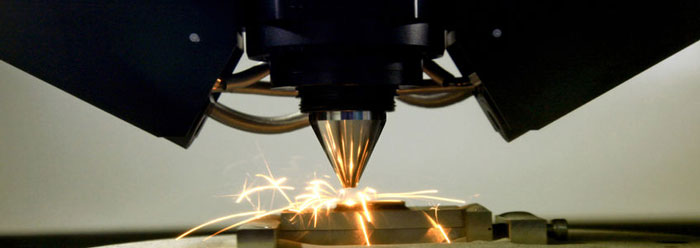When you think of additive manufacturing, or 3D printing as it’s more commonly known, there is a tendency to immediately think of plastic products. However, increasingly metals are being used in additive manufacturing processes and in the last few years metal 3D printing has gone from strength to strength.
In powder form, a variety of metals can be used in 3D printing processes enabling a whole host of components to be made more easily. Consumer products, aerospace components and medical aids are now being routinely produced using metal additive manufacturing processes.
How does metal 3D printing differ to plastic?
When it comes to the design, in the same way as any other material, the object is designed from digital data files. 3D printing with plastic will involve building thin up layers of the material, one by one, until you have the finished item. When using metals the process is different because you are using them in powder form. In metal additive manufacturing thin layers of powder are placed on the plate and then selected areas are melted with precision by laser and fused in the appropriate places. This is repeated and built up until the end product is complete and all the loose remaining powder is then removed.
What metals can be used?
There are a number of metals that can be used but the most common are stainless steels, aluminium, nickel, cobalt-chrome and titanium alloys.
What are the safety issues?
As with any manufacturing process there will be safety aspects to be considered and the appropriate safeguards for operators will need to be in place. Some of the common issues are that the powders used in the metal additive manufacturing processes can be as small as 6 microns and so present a breathing hazard. Personal protection equipment is recommended as well as limiting use of / exposure to the metal powders. In addition some reactive metals such as titanium are susceptible to fire or explosion.
What are the costs associated with metal additive manufacturing?
There are 3 main areas that will affect your costs:
- Raw materials – as with any other raw material the type and quality will vary by supplier
- Inert Gas – the process requires an inert, oxygen free environment. This is achieved by a recirculated flow of argon or nitrogen. Usage and cost will vary by supplier.
- License fees – There may be annual license fees for use of operating parameters on each material you operate with.
General operating costs such as electricity usage should be fairly standard across the board.
If you are thinking about using metal additive manufacturing you may find the whitepaper ‘7 Questions Every Manufacturing Professional Must Ask Before Buying a Metal Additive Manufacturing Machine’ useful
At the start of 2016 it was predicted that the use of metal additive manufacturing would increase and that the supply chain may even struggle to keep up with demand. Whilst use has increased as predicted the anticipated struggle to meet demand in the supply chain does not seem to have materialised yet. With major companies like Airbus and Renishaw using metal additive manufacturing it stands to reason that others will follow and that could have an impact on the supply chain if businesses are not prepared.
Image Copyright: sspopov / 123RF Stock Photo


Recent Comments